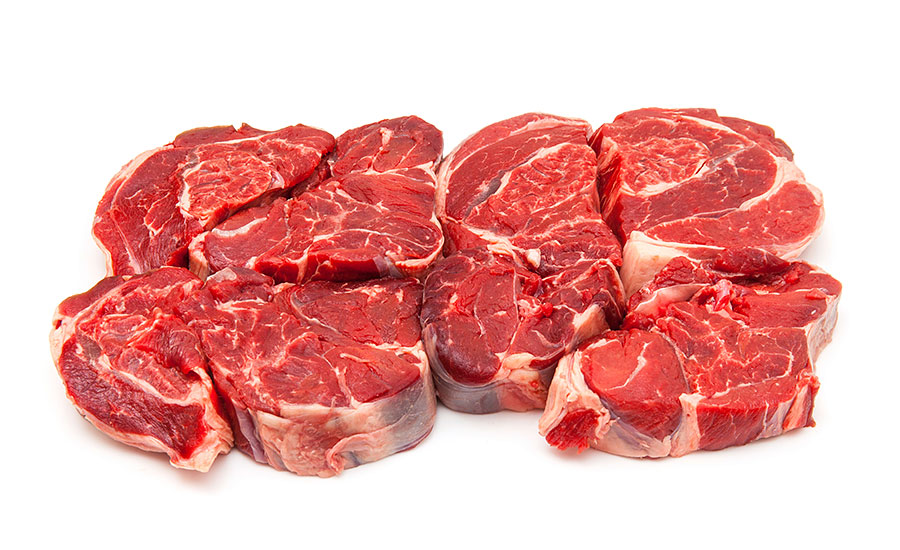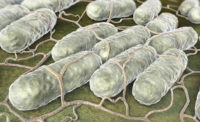It is well known that Salmonella is one of the leading causes of foodborne illness in the United States. After a series of salmonellosis outbreaks linked to ground beef that occurred annually from 2011 to 2013, the U.S. Department of Agriculture’s Food Safety and Inspection Service (FSIS) sought to reduce the number of FSIS-attributable salmonellosis cases. Accordingly, FSIS released a two-year Salmonella action plan that contained 10 objectives or activities, including: “Explore the contribution of lymph nodes to Salmonella contamination” and “Pre-harvest related activities.”
Following the initial release of this comprehensive plan to address Salmonella in meat and poultry products, annual action plan updates were released in 2015 and 2016. FSIS determined both objectives mentioned above have been fully completed. A number of items resulting from the completion of these objectives directly affect the meat and poultry industries. With regard to lymph nodes (LNs), the most notable considerations are for: beef and pork slaughter modernization; increased sampling of head and cheek meat, and possible targeting of LNs; and the planned release of a guidance document, Compliance Guidelines for Minimizing the Risk of STEC and Salmonella in Beef (including Veal) Slaughter Operations, which has since been released. Through the compliance guideline, FSIS issued a number of additional recommendations to lessen the impact of Salmonella in LNs. These include the removal of major peripheral LNs from carcasses, treating heads following LN incision by inspection personnel and diverting head and cheek meat to a full-lethality treatment. The completion of the pre-harvest objective was achieved by updating an existing draft guidance document to include potential pre-harvest intervention strategies to reduce Salmonella contamination that may translate to post-harvest products. The updated guideline, however, addresses poultry, not red-meat species, leaving great opportunity for researchers to continue efforts to identify and validate pre-harvest interventions and best practices for reduction of Salmonella prevalence in hogs and cattle.
In an effort to maintain forward progression toward developing pre-harvest best practices to reduce Salmonella contamination in bovine LNs, researchers across the U.S. have evaluated differences in Salmonella prevalence rates across feeding operations, seasons, regions and cattle types. To continue expanding the current bank of literature addressing pre-harvest cattle management and Salmonella in LNs, our research team conducted a study working with two feeding operations known to harbor salmonellae in the feeding environment. Additionally, these operations were known to consistently produce cattle with differing rates (one “high” and one “low”) of Salmonella prevalence in LNs at harvest. To determine whether the difference in Salmonella prevalence between the feeding operations was because of cattle source or other factors associated with different stages of feeding, weanling steers with common genetic backgrounds, originating from the Texas A&M University McGregor Research Center (McGregor, TX), were followed through the stages of feeding at each operation. In total, 80 Angus-sired beef steers were randomly assigned to a feeding operation (A or B) and a feeding stage: post-weaning; background or stocker; 60 days on feed; or 120 days on feed. Specifically, 20 steers assigned to feeding stage one were transported to the Rosenthal Meat Science and Technology Center (College Station, Texas) for harvest and subsequent LN collection in lieu of traveling to a feeding operation. The remaining 60 steers were divided equally and transported to either feeding operation A or B. Steers were allowed to commingle with non-study cattle and were subjected to practices typical of each feeding operation. At the conclusion of each progressive feeding stage, 10 steers from each feeding operation were transported for harvest and sample collection. It should be noted that four steers did not complete the study. Upon completion of each feeding stage, left and right superficial cervical and subiliac LNs were collected (n = 304), and pooled by both type and animal, effectively yielding two samples per animal (n = 152 total LN samples). In short, LN samples were aseptically processed using previously published methods, subjected to Salmonella prevalence determination, confirmed using PCR and subjected to serotyping as appropriate.
Rates of Salmonella prevalence differed significantly between feeding operations A and B, with all operation A samples returning negative results. All samples obtained from weanling steers (feeding stage 1) also were found to be Salmonella-negative. Among samples from operation B, an increase in Salmonella-positive results was seen as steers progressed into later stages of feeding. Specifically, 22 percent (4 of 18), 77.8 percent (14 of 18) and 94.4 percent (17 of 18) for feeding stages 2, 3, and 4, respectively. Of the serovars isolated, Montevideo, Mbandaka, and Anatum comprised the majority.
When controlling for cattle source, differences in Salmonella prevalence between feeding operations persisted, with operation A continuing to produce cattle with significantly lower rates of Salmonella prevalence than operation B. Further, sequestration of Salmonella in LNs of cattle fed at operation B increased as cattle were moved into pens for finishing. While we cannot explain the reasons for these findings, the outcomes of this study strongly indicate that factors other than incoming cattle source are responsible for differences in Salmonella presence in the LNs of feedlot cattle. Advancement of this sector of pre-harvest research is heavily dependent upon quantifying the contribution of environmental, management and possibly other factors yet to be identified. A better understanding of these factors, combined with a more complete knowledge of transmission routes will likely be key in developing interventions and/or best practices to mitigate pre-harvest Salmonella contamination of bovine LNs. NP









